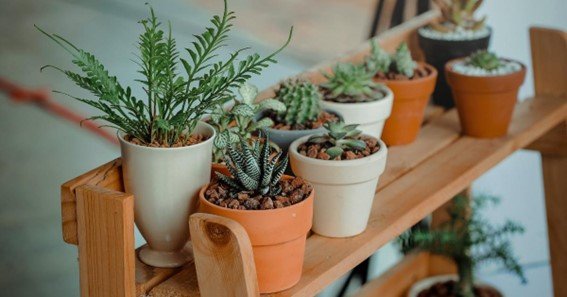In today’s fast-paced world, where time and resources are limited, artificial plants have become a practical and sustainable alternative to live plants. These artificial replicas offer numerous benefits that go beyond mere aesthetics. From enhancing indoor spaces to promoting environmental conservation, fake plants have become essential to modern living.
- Enhancing Indoor Spaces –Artificial plants provide an excellent solution for those who struggle to maintain live plants indoors due to low light conditions, lack of time, or allergies. These lifelike replicas offer the beauty and vibrancy of real plants without the need for sunlight, watering, or pruning. Artificial plants create a visually pleasing and calming environment by adding greenery to interior spaces such as homes, offices, and public areas. They reduce stress, improve productivity, and enhance overall well-being, making them ideal for busy urban settings.
- Low Maintenance and Longevity -One of the most significant advantages of artificial plants is their low maintenance requirements. Unlike live plants that need regular watering, fertilizing, and trimming, artificial plants only require occasional dusting or cleaning. They retain their vibrant colours and shape for extended periods, eliminating the need for replacements or constant care. This long-lasting nature makes them a cost-effective choice in the long run and is ideal for areas with extreme climates, where live plants may struggle to survive.
- Sustainable Landscaping -Artificial plants play a vital role in sustainable landscaping practices. Artificial plant production consumes fewer resources than live plants, including water, pesticides, and fertilizers. Furthermore, artificial plants eliminate the need for soil and reduce the environmental impact of traditional gardening practices. By incorporating artificial plants into landscaping designs, we can conserve water, reduce pollution, and contribute to a greener future. These eco-friendly alternatives are particularly valuable in urban areas with limited access to green spaces.
- Accessibility and Versatility -Artificial plants provide accessibility and versatility in various settings. They can be placed where live plants may not thrive, such as dimly lit corners, high shelves, or rooms with temperature fluctuations. Additionally, artificial plants offer various options, allowing individuals to choose from various sizes, shapes, and plant species to suit their preferences and design aesthetics. From small potted plants to large-scale installations, artificial plants offer endless possibilities for adding greenery to any space.
- Pet-Friendly Solution – Pets, particularly cats and dogs, can be curious and may chew on live plants, which can be toxic and harmful to them. Artificial plants provide a pet-friendly solution by eliminating the risk of accidental poisoning. Pet owners can decorate their homes with artificial plants, knowing their furry friends are safe from ingesting harmful substances. These lifelike replicas allow pet owners to create a green and visually appealing environment without compromising the well-being of their beloved animals.
Conclusion
Artificial plants have gained immense importance due to their allergy-friendly and pet-safe nature, durability in high-traffic areas, and versatility for seasonal decor. They offer a practical solution for individuals with allergies, ensuring the safety and well-being of both people and pets. Moreover, artificial plants provide long-lasting beauty and are adaptable to different environments, making them suitable for various applications. With their many benefits, artificial plants have become an indispensable part of modern interior design and landscaping practices.
Click Here –What Is Mmid In PNB?

